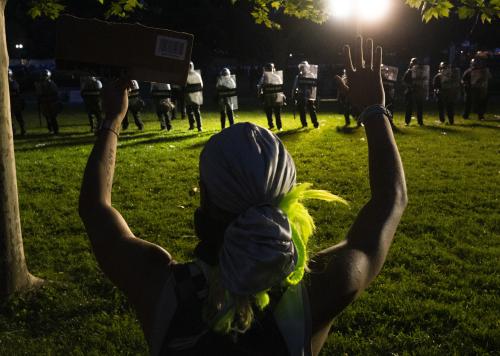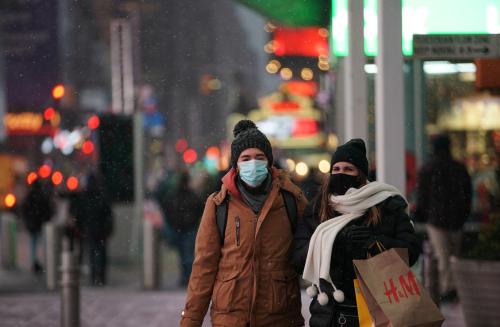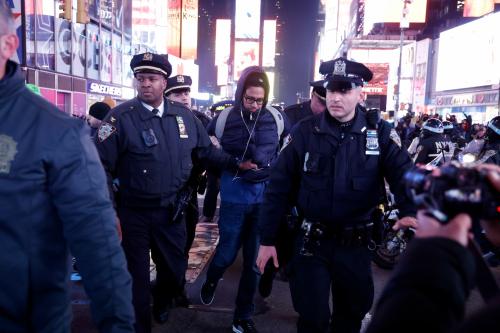If you want more content like this, subscribe to our newsletter.
This week in Class Notes:
-
- Police-involved killings negatively affect the academic and psychological well-being of Black and Hispanic students.
- The effects of key life milestones, such as marriage, divorce, or childbearing, on wealth differ greatly by race and class.
- The Paycheck Protection Program (PPP) and the Economic Injury Disaster Loan (EIDL) effectively targeted minority communities to some extent.
- This week’s top chart shows that since WWII, academic performance has become more predictive of college attendance than socioeconomic status.
- Branko Milanovic argues that the intergenerational transmission of both human and physical capital creates a “self-sustaining upper class” in this week’s choice op-ed.
- Check out our latest piece on what the Biden administration can do to repair the broken for-profit college sector.
- For your calendar: Watch upcoming events on a policy agenda for Black Americans, a data-driven monitor on the middle class, and the effects of COVID-19 on state and local budgets.
Police-involved killings negatively affect the academic and psychological well-being of non-white students
Nearly 1,000 police-involved killings occur each year in the United States. The Black Lives Matter movement and associated protests last summer have shed light on the impact of police violence on Black communities. Desmond Ang uses data from Los Angeles public high schools and police reports to measure the short-term and medium-term effects of police violence on high school students’ well-being. He finds that students living within half a mile of a police killing experience decreases in GPAs as large as 0.08 standard deviations, and that these can persist for several semesters after a killing. Students exposed to police killings in the 9th grade are roughly 3.5% less likely to graduate from high school and 2.5% less likely to enroll in college. Exposed students are also 15% more likely to be classified with emotional disturbance the following year. Notably, Ang finds that these effects are entirely driven by Black and Hispanic students: white students show no decreases in GPA, graduation rate, or psychological well-being after exposure to a killing.
The effects of key life milestones on wealth differ greatly by socioeconomic group
How do changes in wealth across the lifecycle interact with other life events, such as marriage, childbearing, or homeownership? Gopi Shah Goda and Jialu Liu Streeter use data from the National Longitudinal Survey of Youth (NLSY79) between 1985 and 2016 to observe how net wealth levels change after key life milestones, such as marriage, homeownership, childbirth, divorce, disability, health shocks, retirement, and widowhood. They find that homeownership and retirement have the largest positive effects on wealth in the 10 years following the achievement of a milestone. But these effects vary significantly by race, education level, and sex. Whites experience long-run increases in wealth after marriage, having children, divorce, and retirement, while non-whites experience long- run reductions in wealth for these same milestones. Overall, non-whites and non-college-educated individuals see smaller wealth gains from positive milestones and larger wealth reductions from negative milestones compared to whites and college-educated individuals, respectively. The effects of marriage-related milestones (i.e. marriage, divorce, and widowhood) on wealth are almost entirely driven by changes for women, while the changes in wealth for men are small or statistically insignificant.
The Paycheck Protection Program and the Economic Injury Disaster Loan effectively targeted minority communities to some extent
The COVID-19 recession has led to the closure of small businesses across the country, especially those which are Black and Latino-owned. In response, the federal government passed an unprecedented stimulus package aimed at helping small businesses: $660 billion in the Paycheck Protection Program (PPP) and $220 billion in the Economic Injury Disaster Loan (EIDL) program. Was the aid effectively disbursed to minority communities in the early stages of COVID-19? Robert Fairlie and Frank Fossen use zip-code-level administrative data from April to August 2020 to determine where the 15 million loans or advances from the programs ended up. They find a slightly positive relationship between PPP loan receipt per business and the minority share of the population in the area. Interestingly, the first round of PPP funds was disproportionately disbursed to non-minority communities, while the opposite is true for the second round. In terms of PPP loan amount per employee, the authors find a negative relationship with minority share of the population; EIDL loans and advances, by contrast, were highly positively correlated with minority share of the population in both number and amount.
Top chart: The factors that drive college attendance shift drastically after WWII
This week’s top chart shows that family socioeconomic status used to be highly predictive of college attendance prior to WWII. By 1960, academic ability played a much larger role in determining college attendance. However, conditional on academic ability, students from higher socioeconomic status still attend college at higher rates.

Choice opinion: The intergenerational transmission of skills and capital reduces social mobility
“When equally skilled and rich people pair up—and when their wealth derives from both income and capital—their union contributes to rising inequality. And these couples are likely to remain on the top of the pyramid, regardless of external events…By working hard on transferring to their children skill and capital advantages (the former through expensive education), wealthy couples directly and, it would seem, successfully work toward the creation of a self-sustaining upper class. The very definition of an inheritable upper class means that social mobility is reduced,” writes Branko Milanovic.
Self-promotion: The Biden administration must regulate the for-profit college sector
Four years of Trump deregulation paired with the COVID-19 recession have created a “perfect storm” for the growth of the for-profit college (FPC) system. The growth of this sector is concerning because FPCs are more expensive and have worse labor market outcomes than other higher education alternatives. FPCs only enroll 10% of students but they account for half of all student-loan defaults. When controlling for socioeconomic differences among students, a number of studies find that earnings and employment rates are lower for FPC graduates than for public college and non-profit college graduates. FPCs often attract students by engaging in predatory and manipulative recruitment tactics that target Black and Latino low-income students. In light of this evidence, we argue that the Biden administration must reinstate and strengthen the Obama-era regulations on the FPC sector. We argue for policies such as the gainful employment rule and an improved college scorecard to keep students and taxpayer dollars from going to poor-performing for-profit schools.
For your calendar: a policy agenda for Black Americans, a data-driven monitor on the middle class, and the effects of COVID-19 on state and local budgets
Setting a policy agenda for Black Americans,
-
- Monday, February 1, 2021 2:00 PM – 4:00 PM EST
How the American middle class is really doing: What the data tell us
-
- Thursday, February 4, 2021 11:00 AM – 12:15 PM EST
The COVID-19 pandemic and state and local budgets: Past, present, and future
-
- Wednesday, February 10, 2021 2:00 PM – 3:30 PM EST
The Brookings Institution is committed to quality, independence, and impact.
We are supported by a diverse array of funders. In line with our values and policies, each Brookings publication represents the sole views of its author(s).








Commentary
Class Notes: Police killings and student well-being, college attendance, and more
January 27, 2021